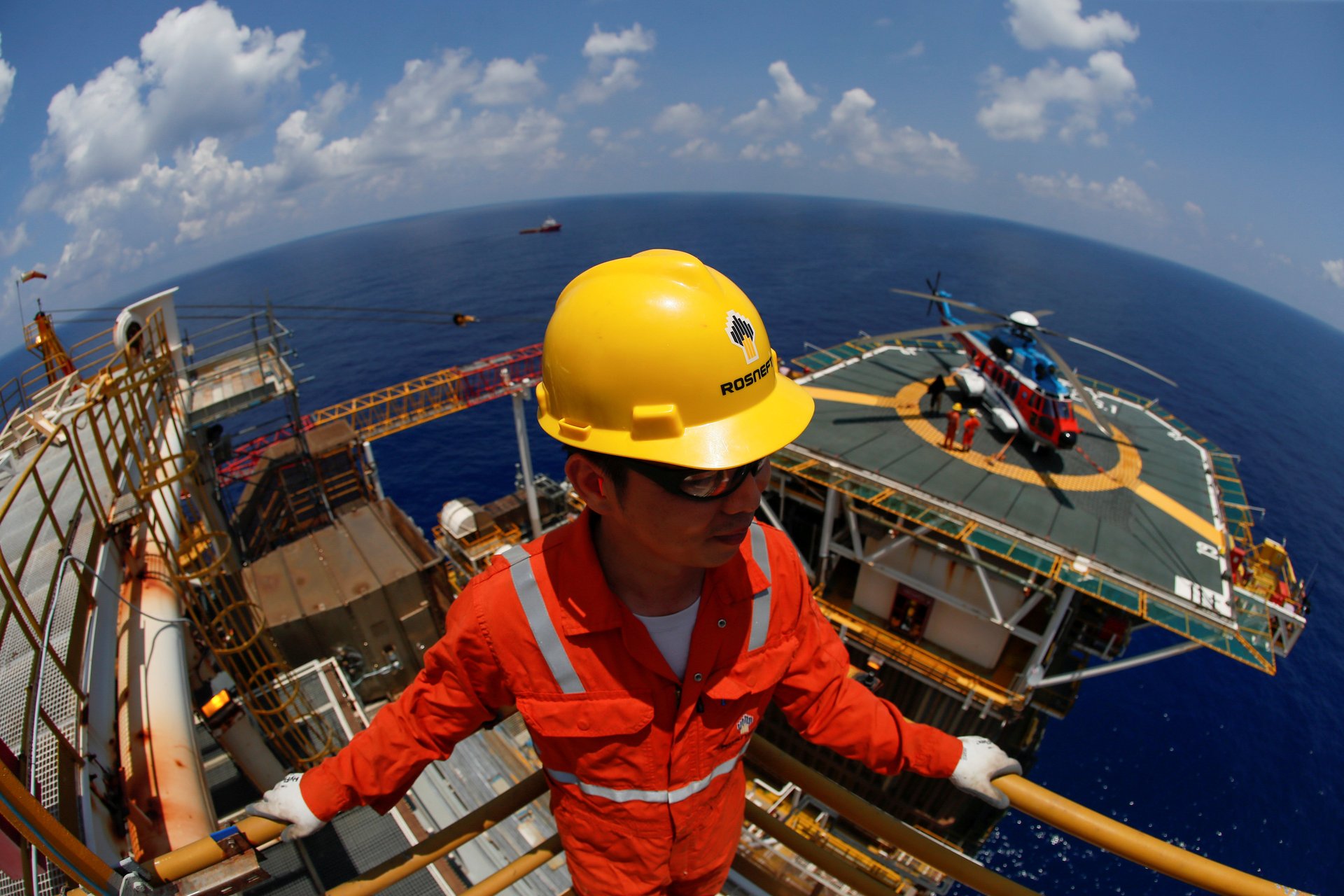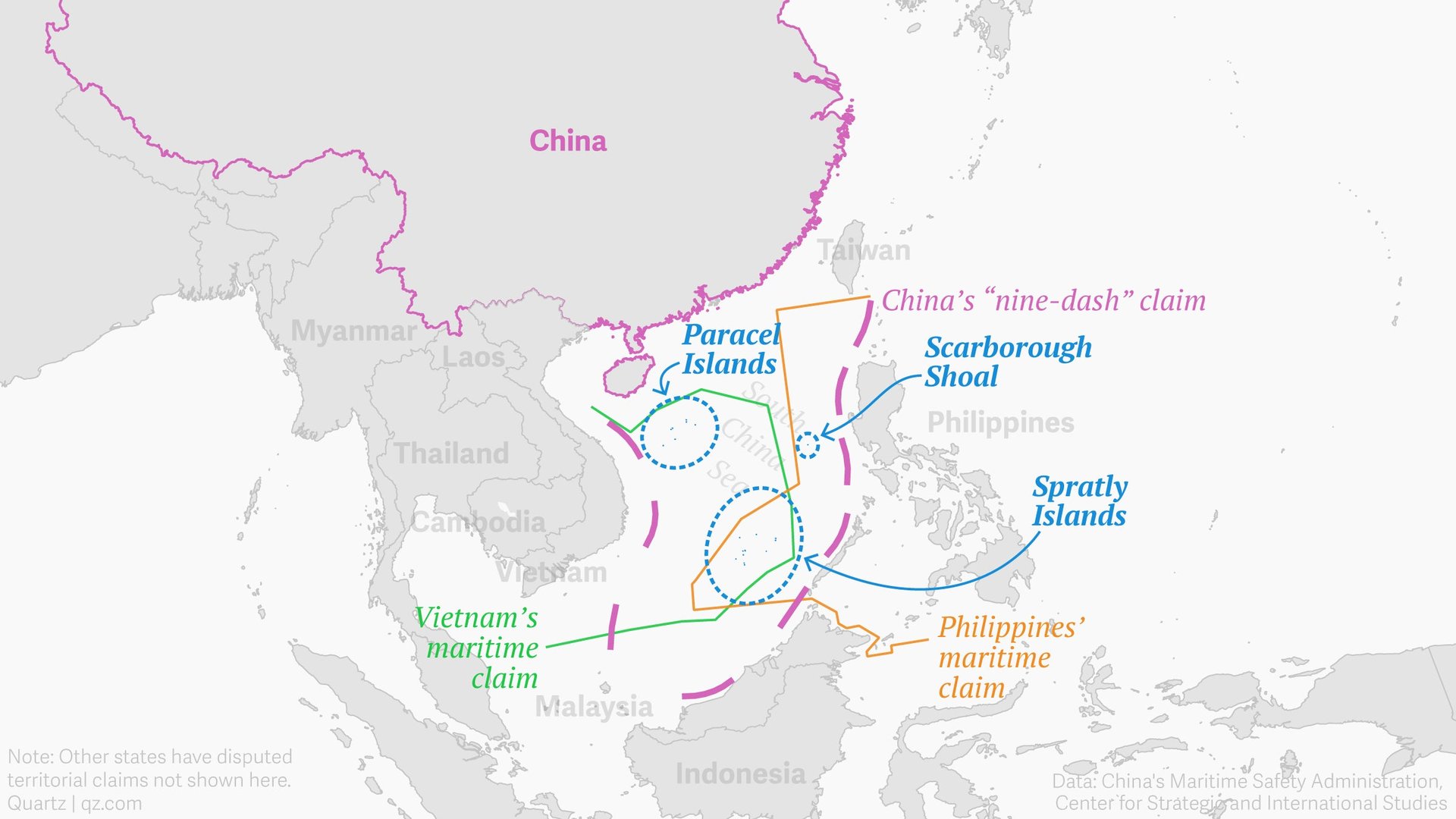The US says China is blocking $2.5 trillion in South China Sea oil and gas
Tensions surrounding the South China Sea have always been largely about oil and natural gas. But it’s often been argued that the strategic shipping lanes carrying Middle East hydrocarbons to East Asia are what really matter, whereas the sea’s own energy resources are relatively modest and unproven.


Tensions surrounding the South China Sea have always been largely about oil and natural gas. But it’s often been argued that the strategic shipping lanes carrying Middle East hydrocarbons to East Asia are what really matter, whereas the sea’s own energy resources are relatively modest and unproven.
That argument has become a bit less tenable. This week, the US State Department used blunt language regarding China’s unsettling actions within Vietnam’s exclusive economic zone (EEZ), which include ongoing seismic surveys by a Chinese vessel protected by armed escorts. Under international UN rules, resources within the zone belong to Vietnam, but China’s “nine-dash line”—a vague, discredited borderline used by Beijing to claim nearly the entire sea—overlaps with it. It also overlaps with the EEZs of other nations, including the Philippines and Malaysia.
In recent years, China has repeatedly intimidated Southeast Asian nations and the foreign firms with whom they’ve partnered out of joint energy deals in the areas of overlap. It aims to secure exclusive access to such arrangements for its own oil giants. One exception allowed for now is Vietnam’s current drilling projects with Russian oil firms, including Rosneft and Gazprom, with Beijing disinclined to confront Moscow, an otherwise increasingly useful ally on the geopolitical stage.
This week’s State Department release emphasizes the value of the sea’s largely untapped oil and gas reserves, and the US’s interest in having its own oil companies involved in joint projects with Southeast Asian nations. The Aug. 21 statement from spokesperson Morgan Ortagus reads in part:
China’s actions undermine regional peace and security [and] impose economic costs on Southeast Asian states by blocking their access to an estimated $2.5 trillion in unexploited hydrocarbon resources…US companies are world leaders in the exploration and extraction of hydrocarbon resources, including offshore and in the South China Sea. The United States therefore strongly opposes any efforts by China to threaten or coerce partner countries into withholding cooperation with non-Chinese firms, or otherwise harassing their cooperative activities.
Early next month, the US will conduct its first-ever combined maritime exercise with the 10-member Association of Southeast Asian Nations, aimed at creating “maritime security building” and involving “prevention and suppression of illegal activities in the seas.”

China, for its part, is better able to support and resupply its intimidating sorties around the sea thanks to the militarized islands it’s controversially built upon reefs in recent years.
Exactly how much oil and gas awaits in the South China Sea? Estimates vary wildly. But it’s clear that much is at stake in the waterway, including the resources below the seabed.